One of the best ways to keep your Dachshund healthy throughout their entire life is to feed them the correct amount of food.
Too much food can lead to obesity, which causes a slew of health problems, and not enough food can cause serious nutritional deficiencies.
Since Dachshunds become overweight extremely easily, it’s vital to feed them the proper amount of food.
It’s more common for a Dachshund to be overweight than underweight. The biggest cause of that is over feeding.
If you’ve found your way to this article, you’re probably questioning how much food you should feed your Dachshund each day.
We’ve compiled a guide based on research and experience to help you determine how much your Dachshund should be eating every day.
How Much Food Should I Feed My Adult Dachshund?
First, determine your Dachshund’s ideal weight
The first step in determining how much you should be feeding your Dachshund is finding their ideal weight.
A standard Dachshund will weigh anywhere from 16-32lbs, whereas a mini Dachshund should be no more than 11lbs.
Note: A tweenie Dachshund may weight in-between that range and not be overweight.
Your Dachshund should be fed an amount of food appropriate for their ideal weight.
Determining the ideal weight can be difficult if your Dachshund is severely underweight or overweight but using this basic “formula” will give you a good starting place.
Note: for a more accurate estimate of ideal weight, consult with your veterinarian.
- Look at your dog’s ribs while they are standing up. Can you see more than the last rib or two sticking out?
- If you can’t see your Dachshund’s ribs, try to feel them underneath the skin. Can you feel them but there is a slight to moderate fat covering? Can you not feel them unless you push hard or can you not feel them at all?
- Look at your Dachshund from the side when they are standing up. Does their abdomen “tuck” up behind the ribs like a Greyhound (ie. chest is closer to the ground than the belly)? Is their underside just one straight line from front to back (no tuck)?
Your can guesstimate if your dog is over or under weight and adjust the volume of their food accordingly. Always consult with your veterinarian if you are not sure though.
- Look at your Dachshund from above when they are standing up. Are their hip bones sticking out? Does your Dachshund have a waist (hourglass shape)? Is their body just one round cylinder with, basically, straight lines from front to back?
- Use the information you have gathered above and consult this ideal weight chart for dogs. Use both the look and feel information for both the ribs and waist to determine where your Dachshund falls on this chart.
- If your Dachshund is classified as underweight, their ideal weight may be 1-3 lbs heavier than their current weight.
- If your Dachshund is classified as overweight, their ideal weight may be 2-5 lbs less than their current weight (it’s more common for Dachshunds to be severely overweight than underweight).
Estimate your Dachshund’s ideal weight and go on to the next step.
It’s important to be completely honest about your dog’s current weight and their activity level so you can best decide how much food to be offering.
Second, check the recommendations on the back of the food package
Another important factor in determining how much your Dachshund should be eating every day is to check the amount recommended on the back of the package of their dog food.
Feeding charts on your dog’s package are another helpful guide.
Use your Dachshund’s ideal weight (as estimated above) when looking at the feeding-amount recommendations.
The amounts recommended on the feeding chart are how much you should be feeding over a 24 hour period.
Adult Dachshunds should be eating two meals per day, so you can divide the suggested food amount by two.
Dachshund puppies should be consuming 3-4 meals per day so divide that daily amount into equal portions for each meal.
Third, account for the variables
There are other factors to consider, of course, such as your Dachshund’s activity level and age.
If your Dachshund is highly active – walking at least an hour most days of the week – you may need to give them a little more food than is recommended on the chart (unless they need to lose weight).
If your Dachshund is sedentary, or they are older and have a slower metabolism, you may need to feed your Dachshund a little less food than recommended.
You’ll want to adjust your dog’s food intake based on their activity level.
If your pup is receiving treats or table scraps throughout the day, they will most likely need to eat a little less during breakfast and dinner.
Pay close attention to the caloric intake of the dog food you’ve chosen, as that will also be a deciding factor in how much to feed your Dachshund.
In other words, don’t always stick with the same amount if you change foods.
For example, if you’re previously determined that your Dachshund needs ⅓ cup of food per meal, and you switch to dog food with a higher calorie density, double-check the feeding recommendations on the back of the package.
If you were feeding ⅓ cup of a lower-calorie food and then switch to something with more calories per cup, you may need to reduce the amount to ¼ cup at each meal to maintain the same weight.
Personally, I guess as to whether I need to feed the recommended amount, a little less, or a little more, and adjust up or down as needed if I notice my Dachshunds are getting a little too thin or chunky (using the criteria laid out in step 1).
How Much Should I Feed My Dachshund Puppy?
Puppies need to be fed a larger amount of food more frequently than adults.
Puppies have more dietary needs than adults, as their bones and joints are developing.
Puppies have different dietary needs than adult dogs do.
Your Dachshund puppy should be eating high-quality food with at least 22.5% protein content.
Puppies have an especially fast metabolism, so they should be given 3-4 meals per day to start.
For Dachshund puppies, follow this rough feeding guideline:
- 2-4 months old: 4 meals daily
- 4-6 months old: 3 meals daily
- 6-8 months old: 2-3 meals daily
- Over 8 months old: 2 meals daily
Like adult Dachshunds, you should calculate the appropriate amount to feed based on your pup’s age and weight.
Always err on the side of caution, however, as you don’t want your puppy to become overweight during their crucial developmental stage.
How Many Treats to Give Your Dachshund
It’s incredibly difficult to resist those big doe eyes on your Doxie.
Their manipulative tendencies get the best of people, but it’s really important that you don’t often give in.
Everyone in your house should be agreement with how many treats your dog gets a day.
Treats should be reserved for rewards during training sessions or when your Dachshund “works for it” like going potty when you ask, sitting when asked, coming when called, or doing a trick.
When you reward your Dachshund for training or good behavior, you need to remember that you did so when it comes to meal time.
It’s also a good idea to get your entire household on the same page when it comes to giving your Dachshund table scraps and other delicious snacks.
If someone in your home is offering your Doxie treats behind your back, your pup may end up gaining weight without you realizing why.
Dachshunds are pros at begging, and they will try to convince everyone that they are absolutely starving.
You’ll need to subtract treat calories from your dog’s food budget each day in order to keep them at a healthy weight.
In other words, the more treats your Dachshund gets through the day, the less food they should get at meal time.
If you feel guilty reducing the amount of food, switch a portion of it out for something that has very low calories like thawed-out green beans (make sure there is no sodium added to them).
If your dog gets treats during the day, make sure to subtract the caloric intake from their meals.
Final Thoughts
In summary, the amount of food your Dachshund should eat is determined by these factors:
- Age
- Current weight
- Ideal weight
- Natural metabolism
- Treat intake each day
- Activity level
- Other health concerns
The ideal goal is to feed your Dachshund an amount of food that doesn’t cause them to gain or lose weight.
Dachshunds are prone to obesity or at least it’s common for owners to not realize when their Dachshund is carrying around excess weight.
Feeding the appropriate amount of food to your Dachshund to keep them at an ideal weight is not only important for health (it’s been shown that being overweight can reduce a Dahcshund’s lifespan by up to two years), but carrying around excess weight can also lead to back problems.
Remember, Dachshunds can manipulate you into thinking they are always starving.
It’s up to you, and the human, to know the appropriate amount of food they should be eating, and not give in, to keep them at a healthy weight.
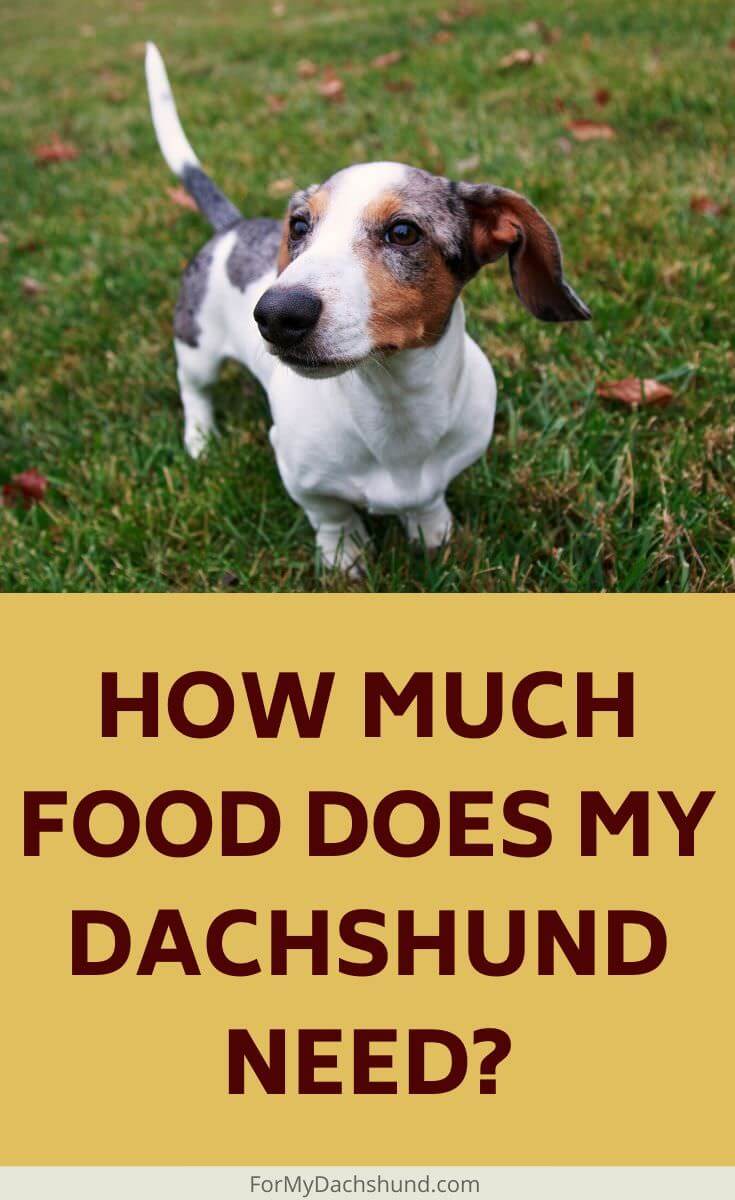
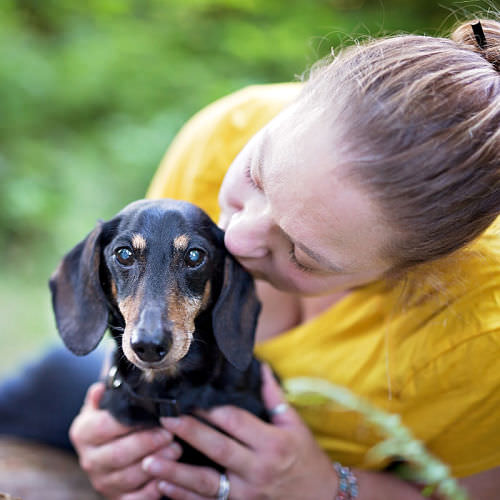
About the Author: Through her 17 years of owning and caring for Dachshunds, and almost 10 years researching and writing about them, JW has become a respected expert in the Dachshund community. Read more about her here.

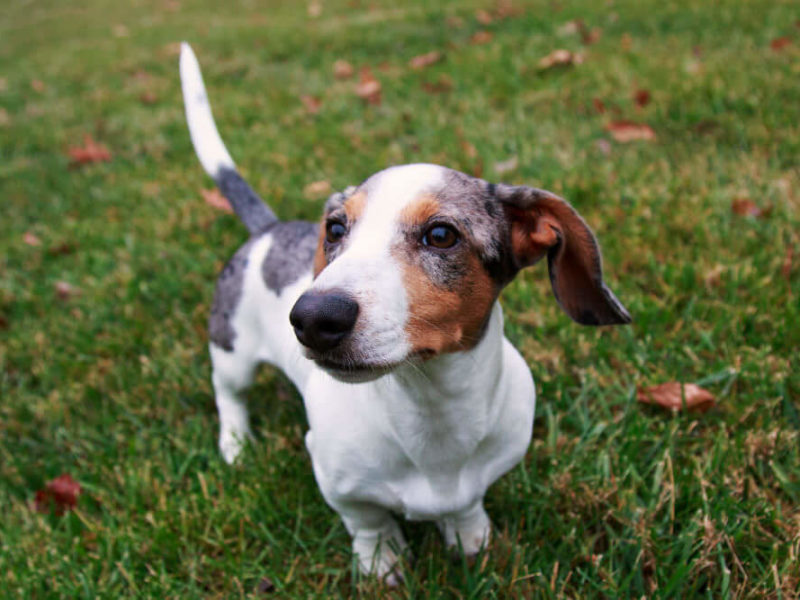

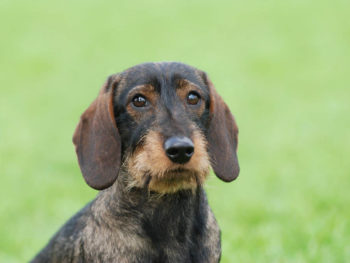


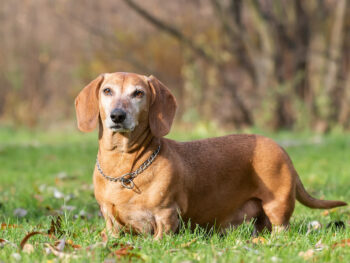


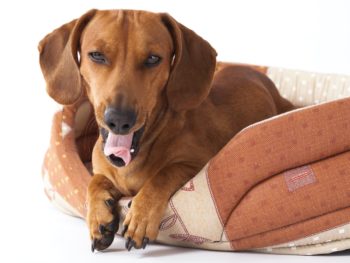
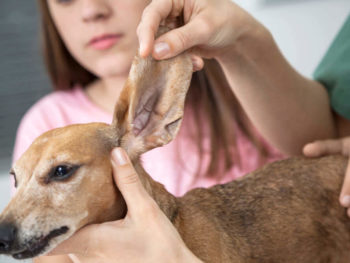

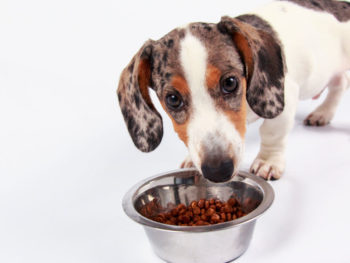

 How to Get Your Dachshund Puppy to Stop Nipping and Biting
How to Get Your Dachshund Puppy to Stop Nipping and Biting


